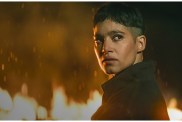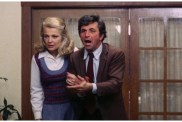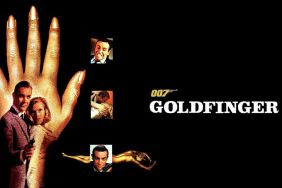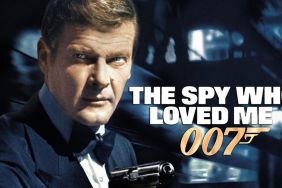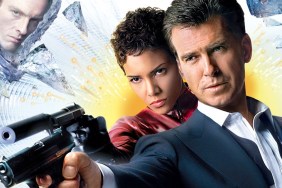
While writing Skyfall I had to delete about three paragraphs because I didn’t want to hint at plot points while relaying some of the problems I had with the film. However, I didn’t want to leave these ideas unexplored. So, with so many turning out to see Skyfall on its opening weekend I feel it is safe to openly explore some of my thoughts now.
My largest issue with the film revolved around Javier Bardem‘s villain, Raoul Silva. In exploring his character so much of the film began to fall apart and/or never really comes together, a lot having to do with the character’s motivation and reasoning.
Why was he doing the things he was doing?
The obvious answer is revenge. Silva wanted to get back at MI6, but more specifically M (Judi Dench). He wanted to put on a show. He was theatrical and he was meticulous in his planning… He was, in many ways, a version of Heath Ledger‘s The Joker from The Dark Knight and, in that respect, Skyfall closely hues to The Dark Knight, only with its plot in a slightly different and simpler order than Christopher Nolan‘s massively successful second entry in his Batman trilogy, a film director Sam Mendes openly admits inspired Skyfall.
One of the most difficult tasks Nolan and his Batman screenwriters faced came at the beginning of The Dark Knight Rises.
At the end of The Dark Knight, Batman was made to be a villain. He was off the grid, gone and despised by the people. Skyfall adapts this approach with Bond only it uses MI6 as a metaphorical Batman and Bond as its internal fall guy, if you’ll excuse the pun.
With the loss of the hard drive containing the identities of all of MI6’s undercover agents around the world, the agency has fallen under scrutiny and just as The Joker uses his quest to have the Batman out himself before the people of Gotham, the villain that has stolen the hard drive pledges to out five agents each week, placing MI6 on the front pages. While this is taking place, Bond is believed dead and off the grid, only to return out of a sense of duty to his country. Batman did the same, returning once Gotham needed him in the face of Bane and his thugs.
This, however, is where Skyfall changes course and avoids the initial problems The Dark Knight Rises faced. Instead of ending with the hero as the bad guy, as The Dark Knight did, Skyfall begins this way, setting up a Dark Knight Rises-esque path to redemption for MI6. From this point, massive chase scenes are hardly the biggest comparisons.

Just as Batman had to travel to Hong Kong for information, Bond must travel to Shanghai as another high wire act involving tall buildings and glass takes place. Q (Ben Whishaw) is essentially Lucius Fox (Morgan Freeman), guiding Bond around London remotely, though I will concede Fox has always been Batman’s Q, just as much as Nolan’s Batman franchise has been as much of a James Bond as it has been Batman films. People have referred to Nolan’s Inception as his Bond film, overlooking the fact that his entire Batman franchise has really been nothing more than Bond in a cape and cowl. Moving on…
A woman enters the picture, as she always will in a Bond film, and yet she meets the same fate as Rachel Dawes (Maggie Gyllenhaal) in The Dark Knight. Bond’s childhood home is destroyed, a page taken out of Batman Begins. We learn Bond’s parents died at a young age and he was then orphaned, Bond’s uncle (Albert Finney) is easily compared to Bruce Wayne’s butler and surrogate uncle, Alfred (Michael Caine) and the death of M is as close as we are going to get in this franchise to watching Bond’s mother being killed, continuing the idea of a hero molded and pained by his past, a metaphor Batman carries with him heavily.
Then we come to Silva, a scarred villain, who, like Bond was once a member of MI6, a similar connection can be made to Liam Neeson‘s Ducard (aka Ra’s al Ghul) and Bruce Wayne’s involvement with the League of Shadows, a questionable organization in and of itself. Silva and Ducard, however, don’t hold too much of a comparison beyond that, though you could say he does hold a comparison to both Ra’s al Ghul and has some of the motivations of his daughter, Talia, but that is more a matter of consequence than comparison.

Silva is a man whose past haunts him and drives him. He plots terrorist acts to prove a point and has devised an elaborate scheme that begins with Bond traveling by sea with Sévérine (Bérénice Marlohe) to his secret island. Here, like The Joker does with Batman in the interrogation scene, Silva tries to find common ground with Bond before allowing himself to be captured.
The Joker did the same and, like Silva, before being captured planned ahead by orchestrating an exodus of Gotham City that would magically result in two separate ferries leaving at the same time, one with prisoners on one ship and civilians on the other, both rigged to blow, along with a cellular telephone surgically implanted in the body of a fellow prisoner, which would blow up once it is called.
Silva’s plan was to be captured along with his laptop, which had a virus installed that would hack into the MI6 mainframe and allow him to escape, an escape that fortunately took place while M and her co-horts were at a hearing, responding to questions regarding the stolen hard drive. Then we get to the part where Silva knew to wire an underground tunnel with a bomb that would end with him and Bond chatting only minutes before a train arrived, but that’s really not the point I’m trying to make here.
